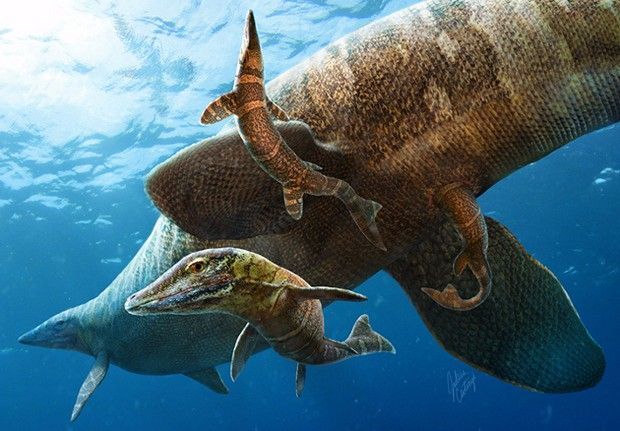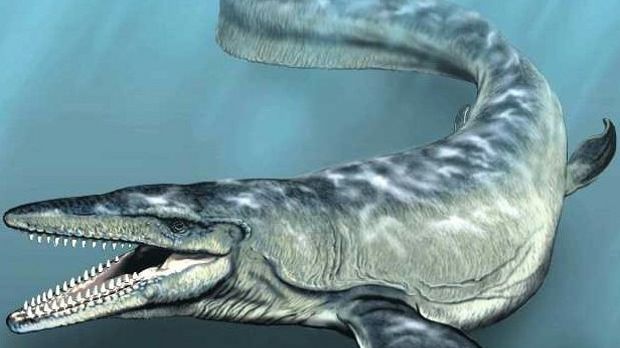Up until 65 million years ago when they went extinct, a small army of humongous and positively terrifying lizards known to scientists as mosasaurs populated our planet's oceans.
Fossil evidence uncovered over the years indicates that these creatures could grow to measure as much as 50 feet (roughly 15 meters) from head to tail.
Just to put things into perspective, it must be said that, in this day and age, the average bus measures 40 feet (12 meters) in length. Yup, these ocean dwellers were bigger than buses.
Paleontologists say the marine lizards were a common sight in the waters off the coast of present day Western Europe and North America in ancient times.
Their anatomy resembled that of modern crocodiles, meaning that they had elongated jaws fitted with sharp teeth and muscular bodies complete with a strong tail that helped them move through the water.
Given the scary-looking teeth adorning the inside of their mouth, its obvious the creatures didn't feed on algae or other aquatic plants. They were carnivores and preyed on fish, maybe even turtles.
In fact, some paleontologists suspect that, just like tyrannosaurs, these marine lizards were no strangers to cannibalism and fed on others of their kind if the opportunity presented itself.
New insights into their breeding behavior
For quite a while, it was believed that the lizards delivered their offspring either on land or at least close to shore, where they would have been much safer than in the open ocean.
In a recent report, however, a team of Yale University researchers argue that, as indicated by fossil evidence at hand, chances are that baby mosasaurs were in fact born far from land.
Writing in the journal Paleontology, the scientists detail how, as part of their work, they looked at the fossilized remains of several such lizards currently kept at the Yale Peabody Museum.
The bones examined by study lead author Daniel Field and his colleagues were all left behind by very young specimens. The other thing they have in common is that they were all deposited in the open ocean.
This indicates that, even at a very young age, baby mosasaurs did not hide close to shore but were instead riding the waves together with their parents.
“Mosasaurs are among the best-studied groups of Mesozoic vertebrate animals, but evidence regarding how they were born and what baby mosasaur ecology was like has historically been elusive.”
“Contrary to classic theories, these findings suggest that mosasaurs did not lay eggs on beaches and that newborn mosasaurs likely did not live in sheltered nearshore nurseries,” said Daniel Field.

 14 DAY TRIAL //
14 DAY TRIAL // 

